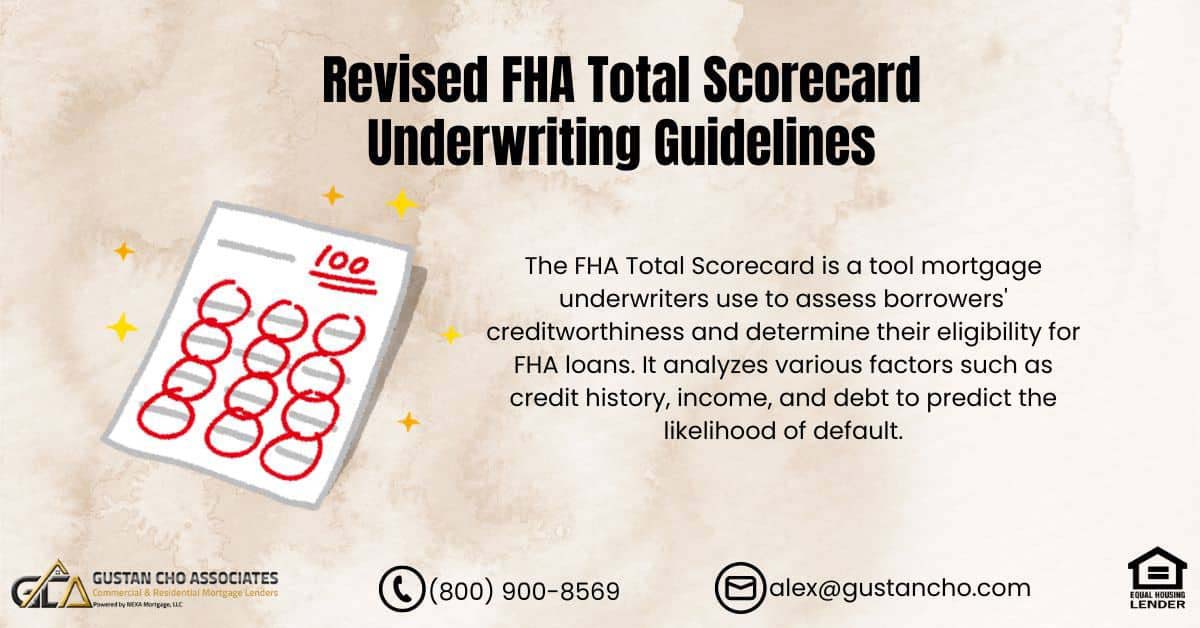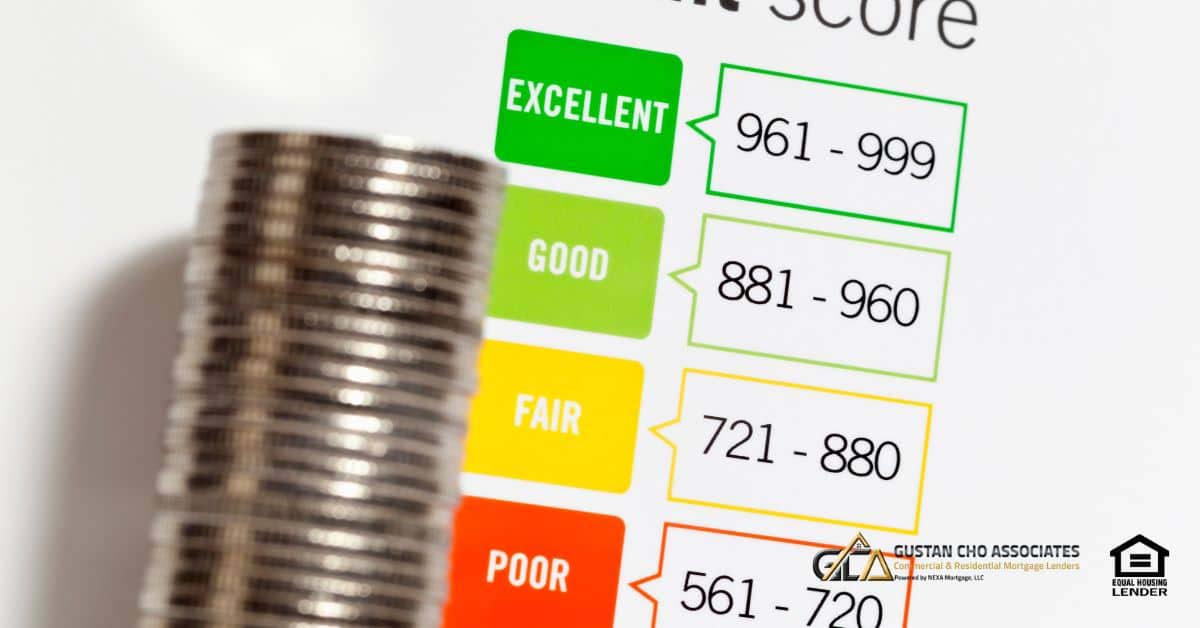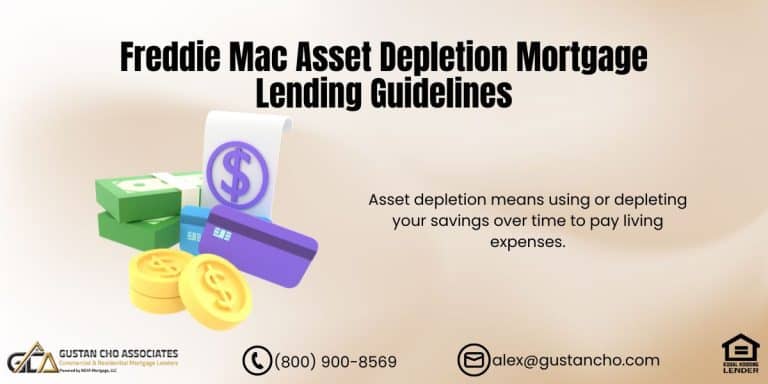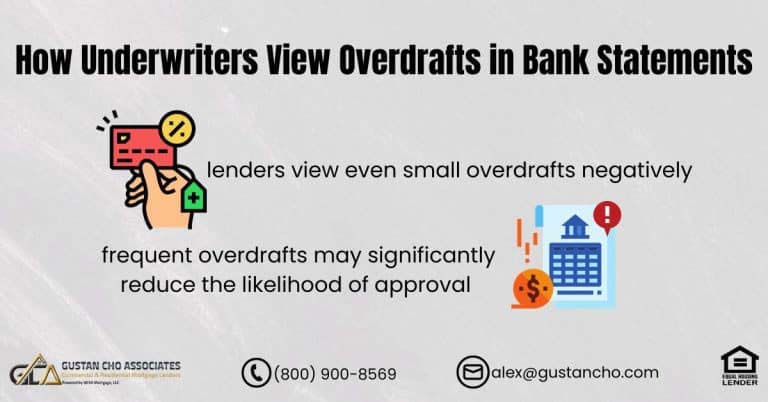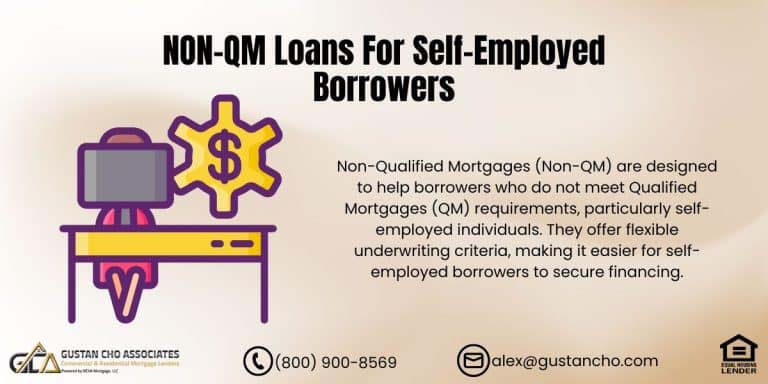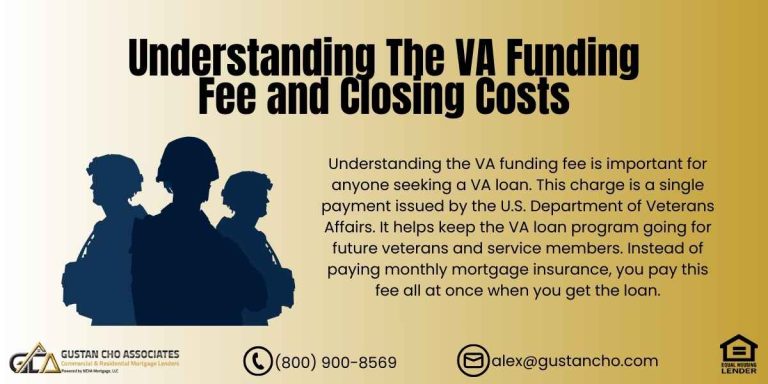This blog will cover the FHA Total Scorecard and how it works. The United States Department of Housing and Urban Development (HUD) FHA TOTAL Scorecard enables mortgage underwriters to analyze and evaluate mortgage borrowers’ overall credit/income worthiness and instant automated eligibility or denial by FHA. Borrowers who want to qualify for FHA loans need to meet all mortgage guidelines under HUD 4000.1 FHA Handbook.
FHA loans are the most popular loan program for first-time homebuyers, borrowers with bad credit and low credit scores, and homebuyers with high debt-to-income ratios. The team at Gustan Cho Associates are experts in helping homebuyers with credit scores down to 500 FICO and borrowers with no credit scores.
FHA TOTAL Scorecard is similar to the Fannie Mae and Freddie Mac Automated Underwriting System. Loan officers can enter borrowers’ data into FANNIE MAE DU AUS or FREDDIE MAC LP AUS. The decision of the FHA TOTAL Scorecard rendered by Fannie Mae is DU FINDINGS, and Freddie Mac is LP FINDINGS automated approval.
What Is The Automated Underwriting System (AUS)
The Automated Underwriting System is also referred to as AUS. FHA TOTAL Scorecard was implemented and launched by HUD, the parent of the Federal Housing Administration (FHA) to help mortgage underwriters determine the creditworthiness and predictability of borrowers’ future ability to repay their new home loan.
There are two different types of automated underwriting system. The Desktop Underwriter or DU.is the Fannie Mae version of the automated underwriting system. The Loan Prospector or LP is the Freddie Mac version of the automated underwriting system.
The automated underwriting system is a sophisticated computer system that will render an automated decision on the mortgage loan applicant based on the data entered. The automated underwriting system determines the potential default rate of the new FHA loan and will render a recommendation on how it needs to be evaluated. All data of borrowers submitted to FHA TOTAL Scorecard is quickly analyzed with using an automated standardized scoring system.
Qualify for a 3.5% down payment FHA loan is a 580 FICO credit score
What Are The Three Types of Findings From AUS?
It results in fairness and impartiality and renders a determination that is impartial. The mortgage underwriter normally inputs data including the completed 1003 mortgage application into the FHA TOTAL Scorecard. Within seconds, the system will render a decision of approval or denial on the subject borrower.
The automated underwriting system will render an approve/eligible per AUS within seconds after determining the mortgage loan applicant meet all the agency mortgage guidelines. The AUS has the latest most updated algorithm on the agency guidelines of HUD, VA, USDA (GINNIE MAE), Fannie Mae, and Freddie Mac. An approve/eligible means the mortgage loan applicant meets all agency guidelines.
This system is a real-time automated response. The three types of AUS Findings are approve/eligible, refer/eligible, or refer with caution. Approve/eligible means the automated underwriting system approval, refer/eligible means the AUS is referring the file for a manual underwrite, and refer with caution means an automated underwriting system denial.
How Many Scores Do You Need for FHA?
FHA has developed a credit assessment engine known as the FHA TOTAL Mortgage Scorecard to analyze the creditworthiness of borrowers and to predict the likelihood of default for FHA loans. The FHA TOTAL Scorecard is used with FHA loans that are submitted through the automated underwriting system also referred to as AUS.
What is FHA Guidelines?
The FHA has established guidelines that borrowers must meet to qualify for Federal Housing Administration loans, which the government backs. These guidelines are designed to make homeownership more accessible by offering loans with lower down payment requirements and more relaxed credit score thresholds than conventional mortgages.
FHA loans can be advantageous for individuals purchasing a home for the first time or those with limited savings. These loans typically necessitate a down payment of only 3.5% of the purchase price, which makes it easier to break into the housing market. Additionally, FHA loans may be available to borrowers with credit scores as low as 580, although those with lower scores may still qualify with a larger down payment.
In addition to down payment and credit score requirements, FHA guidelines also consider factors such as debt-to-income ratio (DTI) and property standards. The DTI ratio, which measures the percentage of a borrower’s income dedicated to debt payments, is allowed to be higher for FHA loans than conventional loans, typically up to 43%.
Furthermore, FHA loans require financing the property to meet minimum standards to ensure its safety and habitability. These guidelines and the requirement for mortgage insurance premiums help mitigate the risk for lenders and make FHA loans a viable option for many borrowers seeking affordable homeownership opportunities.
What is the Purpose of the FHA Total Scorecard for Mortgage Lenders
The FHA Total Scorecard helps mortgage lenders manage workflow while analyzing and expediting the endorsement process. After evaluating borrower’s mortgage credit risk profile, FHA TOTAL Scorecard makes a recommendation of “Accept” or “Refer” .
Homebuyers with outstanding collections, charge-offs, low credit scores, high debt-to-income ratios can get approved for an FHA loan. Having bad credit is fine. You don’t have to pay outstanding collections and charge-off accounts, can have late payments, have repossessions, and qualify for an FHA loan as long as you have timely payments in the past 12 months.
An “Accept” classification means that the FHA will insure the borrower’s loan with reduced documentation. “Refer” means that the lender will be required to manually underwrite the loan. Not all mortgage lenders do manual underwrites on referred findings. Click here to find a mortgage lender, click here
What Are Compensating Factors on FHA Loans
Compensating factors are required for manually underwritten mortgage loans. Example of compensating factors are the following:
- higher down payment
- second income with at least one-year longevity but not used as qualified income
- reserves
- verification of rent with payment shock of less than 5%
Basics of FHA Total Scorecard and Purpose
One very important matter to understand is lenders cannot decline a loan solely based on an FHA scorecard risk assessment. Human underwriting intervention still needs to take place. Some of the things that FHA Scorecard does not do include the following:
- Determining Loan-To-Value or Debt-To-Income Ratio
- The Automated Underwriting System calculates and analyzes this
- Deny mortgage loan application
- Full analysis and review subject property to see if it is eligible for financing
- Assessing requirements of the down payment on home purchase down payment
HUD does require that all transactions be scored through TOTAL. FHA Streamline Refinance Mortgage Loans are exempt and so are mortgage borrowers with no credit scores. Each AUS finding using TOTAL provides mortgage lender with a result of documents. Mortgage Underwriters will receive the result documents from TOTAL. The mortgage underwriter then makes its decision on risk factors
The last TOTAL score run must be included in the case binder which has been submitted by the Housing and Urban Development (HUD). This is regardless of what the results and evaluations are. It may mean that readings and evaluation may differ from the decision.
What are the maximum ratios for FHA manual underwrite?
For FHA manual underwriting, the maximum ratios are generally more conservative than standard FHA loans:
- Housing Ratio (Front-End Ratio): Generally, borrowers should aim to keep their housing expenses at or below 31% to 33% of their gross monthly income.
- Debt-to-Income Ratio (Back-End Ratio): Usually around 43% to 45%, indicating that total monthly debt payments, including housing expenses, should not exceed that percentage of the borrower’s gross monthly income.
These ratios may vary slightly depending on the lender and borrower’s specific situation, but they give a general idea of the thresholds for FHA manual underwriting.
Automated Approval Versus Lender Overlays
There are many instances where the Scorecard will render an approve/eligible per Automated Underwriting System, however, a mortgage underwriter will deny a borrower. This is due because every lender/investor can have additional lending guidelines called lender overlays.
HUD Guidelines To Get Automated Underwriting System Approval
Here are basics of an approve/eligible where borrowers fully qualify and get an automated approval:
- 580 credit scores
- Front-end DTI 46.9%
- Back end DTI 56.9%
- Outstanding collections and charged-off accounts do not have to be paid
- Gift Funds allowed
- Non-Occupant Co-Borrowers allowed
- Recent late payments in the past 12 months
- Late payments after housing event and/or bankruptcy
All of the above factors are allowed to get an automated approval and FHA will insure the FHA Loans of the borrower. However, it is up to the mortgage lender to set its own mortgage guidelines. As long as borrowers meet the above guidelines, FHA TOTAL Scorecard can render automated approval. Lenders are allowed to have stricter mortgage guidelines that are above and beyond FHA Guidelines.
Common Lender Overlays Imposed By Lenders
Here are examples of lender overlays that a particular lender can impose:
- Higher credit scores than the minimum of 580 required by FHA
- Most lenders will require 620 to 640 credit scores
- Many lenders will have overlays on debt to income ratios where they may cap it at 45% to 50%
- Lenders can require outstanding collections and charged-off accounts to be paid off
- Non-occupant co-borrowers can be added for borrowers with higher credit scores
- Late payments in the past 12 months may not be allowed
- Late payments after housing event or bankruptcy may not be allowed
Do All Mortgage Lenders Have The Same Requirements?
Not all lenders have the same mortgage lending requirements on the same loan program. All lenders need to meet the minimum agency guidelines of HUD, VA, USDA, Fannie Mae, or Freddie Mac but they can have higher lending requirements called lender overlays. The good news is that not all lenders have the same mortgage lending requirements on FHA loans. Gustan Cho Associates are mortgage brokers licensed in 48 states including Washington DC and Puerto Rico.
The team at Gustan Cho Associates has a national reputation of being able to originate and approve mortgage loans other lenders cannot do. Over 80% of our clients are borrowers who could not qualify at other mortgage companies.
Gustan Cho Associates has a national reputation for its no overlays on government and conventional loans. We just go off FHA TOTAL Scorecard. If we get an approve/eligible per automated underwriting system, we will close the loan. Not just close the loan but will close it on time. We have zero overlays and just go off FHA TOTAL Scorecard/AUS FINDINGS. To qualify and get pre-approved, please contact us at Gustan Cho Associates at 800-900-8569. Text us for a faster response. Or email us at alex@gustancho.com.
Click here to find a mortgage lender
FAQs: Revised FHA Total Scorecard Underwriting Guidelines
1. What is the FHA Total Scorecard, and how does it work? The FHA Total Scorecard is a tool mortgage underwriters use to assess borrowers’ creditworthiness and determine their eligibility for FHA loans. It analyzes various factors such as credit history, income, and debt to predict the likelihood of default.
2. Who can benefit from FHA loans? FHA loans are popular among first-time homebuyers, borrowers with low or bad credit scores, and those with high debt-to-income ratios. These loans offer lower down payment requirements and more flexible credit score criteria than conventional mortgages.
3. What are the maximum ratios for FHA manual underwriting? For FHA manual underwriting, the maximum housing ratio (front-end ratio) is generally around 31% to 33%, and the maximum debt-to-income ratio (back-end ratio) is typically around 43% to 45%. These ratios may vary slightly depending on the lender’s policies.
4. What are lender overlays on FHA loans? Lender overlays are additional lending requirements individual lenders impose on top of FHA guidelines. These overlays may include higher credit score requirements, lower debt-to-income ratio limits, or requirements to pay off outstanding collections or charged-off accounts.
5. Do all mortgage lenders have the same requirements for FHA loans? No, not all lenders have the same requirements for FHA loans. While they must meet the minimum FHA guidelines, lenders can have their overlays, which can vary significantly. Borrowers must compare offers from different lenders to find the best fit for their financial situation.
This blog about the Revised FHA Total Scorecard Underwriting Guidelines was updated on March 19th, 2024.


